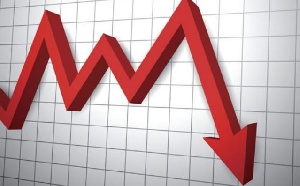 The largest difference in Food and Non-Food inflation was recorded in Eastern Region
The largest difference in Food and Non-Food inflation was recorded in Eastern Region
Figures from the Ghana Statistical Service have shown how Ghana’s inflation rate dropped marginally to 9.9% in January 2021, from 10.4% which was recorded in December 2020.
The falling of the rate means the average change in the price of goods and services was low compared to December 2020.
In an interview with Courage Martey a Research expert at Databank on the implications of this on the first quarter of the 2021 trading year, he said the slight falls of the inflation rate is a good start and this provides some encouraging signs on what to expect in the second quarter of the year.
“It is a good sign and shows some confidence ahead of the second quarter of the year, particularly when you consider the second quarter of last year when we had a slight increase in the rate as a result of the COVID-19 lockdown. The lockdown caused a spike in the rate and that increase in the index of the second quarter would have provided a very sharp increase in the base year that will be used to calculate this year’s second quarter and because of that base effect if it is declining already to 9.9% then this gives more confidence that we could have that base effect pulling it further down by the second quarter,” he said.
However, prices of some foodstuffs were relatively high as food inflation was 5.1 percent higher than non-food inflation. This comes on the back of marginal falls on yields of Treasury bills.
Food inflation (12.8%) came down compared to last month (14.1%) but is still slightly above the average over the last 12 months (12.3%). Overall month-on-month Food inflation was 1.2% (0.3 percentage point lower than last month, but higher than the average over the last 12 months).
Within the Food Division, Vegetables (20.3%) was the Subclass with the highest rate of inflation, which is lower than that of December 2020 (24.2%).
Non-Food year-on-year inflation on average was the same as last month (7.7%), which is below the 2020 average (8.5%).
The biggest difference between the average and the current month were recorded for Housing (2.1 percentage points) and Education services (-4.1 percentage points).
The inflation of imported goods was 6.1% same as last month, while the inflation of local goods was 11.3% on average (down from 12.1% last month). Month-on-month inflation for imported goods was 0.7% and for locally produced goods 1.0%.
Meanwhile, the regional representations also showed that Greater Accra region recorded the highest inflation rate of 15.1% while Ashanti region recorded higher month-on-month inflation for 12 Divisions in January compared to the 12-month average, Greater Accra recorded the lower inflation for 11 out of 13.
However, the Upper West region recorded the least inflation rate of 1.9%. A -0.6% Food inflation and 4.5% Non-Food inflation.
The largest difference in Food and Non-Food inflation was recorded in Eastern Region (12.8% and 2.6% respectively).